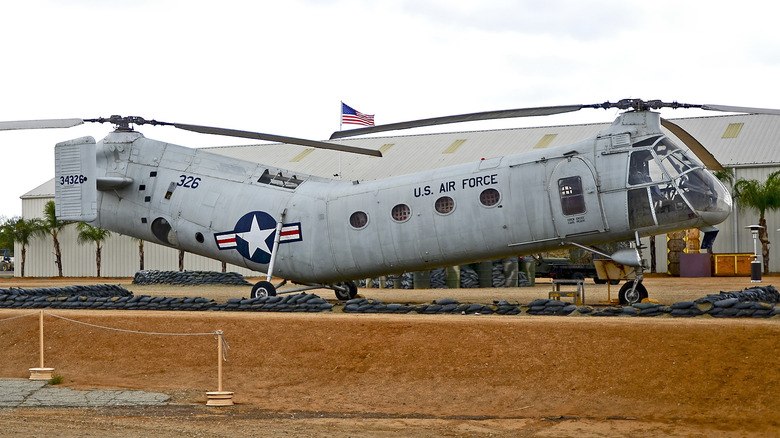What Makes This Military Helicopter the Flying Banana?

The Origins of the Piasecki H-21 "Flying Banana"
The Piasecki H-21 helicopter, affectionately known as the "Flying Banana," was a groundbreaking aircraft that marked a significant milestone in the development of helicopters. Its creation can be traced back to Frank Piasecki, who co-founded the P-V Engineering Forum with his college friend Harold Venzie in 1940. At the time, helicopters were still in their early stages and faced considerable skepticism, but Piasecki's vision for a multi-role helicopter with tandem rotors would eventually change the course of aviation history.
Piasecki's fascination with flight led him to develop the idea of a helicopter with two rotors—one at the front and one at the rear. This design aimed to create a more stable and versatile aircraft. His first attempt, the PV-2, was a single-seat, single-rotor helicopter built in 1943. It served as a technology demonstrator, proving that helicopters could actually work. The PV-2 was only the second helicopter to fly in the United States, following Igor Sikorsky’s VS-300 in 1939. Piasecki also became the first person in the U.S. to receive a helicopter pilot's license.
Development and Design Innovations
The development of the H-21 occurred in several stages, beginning with experimental models such as the XHRP-1 and XHRP-2. These prototypes featured the unique tandem rotor configuration that would later define the H-21. One of the most distinctive features of the H-21 was the bent rear fuselage, which angled upward to prevent the overlapping rotors from colliding with the body of the aircraft. This unusual design gave the helicopter its nickname, "Flying Banana."
The U.S. military initially showed little interest in Piasecki's concept, but the Coast Guard saw potential in the aircraft for heavy transport and rescue missions. In 1944, the Coast Guard placed an order for one of the helicopters, marking the first military contract for a Piasecki aircraft. The Navy, which had been hesitant to invest in the untested technology, soon followed suit, ordering two of their own.
The Evolution of the Flying Banana
The first flight test of the XHRP-1 took place in June 1947 and was dubbed the "Dogship" because it was a mock-up without a fabric cover. The second XHRP-1 was used for static testing. These prototypes were three times larger than any other helicopter at the time, making them the world's largest tandem-rotor helicopters. Piasecki continued to innovate, creating other unique aircraft such as the X-49 Speedhawk, which also appeared on lists of the strangest-looking military helicopters ever made.
As the H-21 gained popularity, Piasecki produced twenty HRP-1s, which were used by the Coast Guard, Navy, and Marines. These helicopters were capable of carrying ten passengers or six stretchers and lifting 2,000 pounds of cargo. They could also be modified with floats or skis for different environments.
Legacy and Impact
The H-21 played a crucial role in the development of vertical assault tactics, particularly with the Marine Corps. The H-21C "Shawnees" set altitude and speed records for the Air Force and were used extensively during the Vietnam War. Unfortunately, one of these helicopters was shot down in February 1961, marking the first U.S. helicopter lost in combat.
In 1960, Boeing acquired the Piasecki Helicopter Corporation, incorporating it into its helicopter division. A total of 707 H-21s were built, and the aircraft is considered the precursor to the highly regarded CH-47 Chinook. The Flying Banana not only paved the way for future helicopter designs but also left a lasting legacy in aviation history.

Post a Comment for "What Makes This Military Helicopter the Flying Banana?"